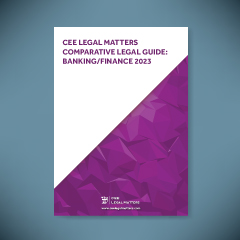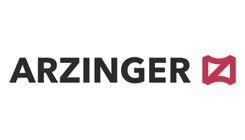Contributed by Arzinger.
I. LEGAL FRAMEWORK
1.1. Which main legislative and regulatory provisions govern the banking sector in your jurisdiction?
Ukrainian banking legal framework consists of two levels of regulations. The higher level contains laws adopted by the Ukrainian Parliament. The lower one contains regulations of the primary banking regulator – the National Bank of Ukraine (NBU).
The main regulations are:
- The Law of Ukraine “On Banks and Banking Activity” dated December 7, 2000 (Banking Law). The Banking Law defines the structure of the Ukrainian banking system and stipulates economic, organizational, and legal principles of establishment, business, reorganization, and liquidation of banks;
- The Law of Ukraine “On the National Bank of Ukraine” dated May 20, 1999. This law sets out the structure and powers of the NBU;
- The Law of Ukraine “On Households Deposit Guarantee System” dated February 23, 2012 (Deposit Guarantee System Law). The law establishes the households deposit guarantee system, specifies the authority of the Households Deposit Guarantee Fund and powers of the Households Deposit Guarantee Fund regarding the liquidation of banks and removal of insolvent banks from the market;
- The “Regulation on Licensing of Banks” adopted by the Resolution of the NBU No. 149 dated December 22, 2018. This regulation specifies the procedure of a bank creation and licensing, the procedure of receiving the NBU’s approval for the acquisition and increasing of a qualifying holding in a bank, qualification requirements for certain management positions, etc.;
- The “Instruction On the Regulation Procedure for Banking Activity in Ukraine” adopted by the Resolution of the NBU No. 368 dated August 28, 2001. The instruction is the regulatory document that sets requirements for financial indicators, calculation procedures of financial indicators, and capital requirements.
1.2. Which bodies are responsible for enforcing the applicable laws and regulations? What are their main competencies?
As mentioned above, the main banking regulator in Ukraine is the NBU. As a central bank, the NBU:
- conducts monetary policy (issues Ukrainian hryvnia (local currency); ensures its stability);
- secures the financial stability of Ukraine;
- regulates and supervises banks;
- acts as a lender of last resort for banks;
- carries out foreign exchange regulation (regulates foreign exchange transactions; conducts currency control supervision over commercial banks);
- enforces the law in case of violation of laws/regulations by a bank;
- etc.
Another important body is the Household Deposit Guarantee Fund (Fund) – a special government body whose main role is to secure the functioning of the household deposit guarantee system, to remove insolvent banks from the market, and to liquidate banks in cases, stipulated in the Deposit Guarantee System Law. The Household Deposit Guarantee Fund is empowered to:
- maintain Register of Participants of the Household Deposit Guarantee Fund;
- organize repayment of compensation for deposits;
- regulate, oversee, and analyze commercial banks within the purpose of the Household Deposit Guarantee Fund;
- enforce the law.
1.3. What are the current priorities of regulators and how does the regulator engage with the banking sector?
The current priorities of the NBU are driven by the effects of the full-scale invasion of the Russian Federation into Ukraine. The main goal of the NBU during the war is to secure the stability of the Ukrainian banking system by way of mitigating the negative consequences of the invasion. For that, the NBU maintains a permanent dialogue with local banks and other financial institutions to understand the ongoing financial situation.
Moreover, the NBU introduced temporary regulations that stipulate peculiarities of banking regulation for the period of martial law. Such temporary regulations release banks from liability for non-compliance with requirements if they occurred due to the full-scale invasion.
Finally, the NBU also closely overlooks the banking sector in order to determine banks having liquidity/solvency issues and banks that have sanctioned ultimate beneficiary owners or are controlled by the Russian Federation. The NBU either deprives such owners of their voting rights by passing them to appointed proxies or liquidates a bank having such owners/controllers.
II. AUTHORISATION
2.1. What licenses are required to provide banking services in your jurisdiction? What activities do they cover?
In order to provide banking services, a joint-stock company has to receive a banking license from the NBU. Under the Banking Law, the banking services include the following activities:
- attract funds (deposits) from an unlimited number of individuals and legal entities;
- open and maintain current and escrow accounts of clients;
- the place attracted funds in its own name, on its own terms, and at its own risk.
- A local bank may also:
- provide currency valuables trading services to individuals and legal entities;
- invest;
- issue its own securities;
- provide safekeeping services;
- collect funds and transport currency valuables;
- provide consulting and information services regarding banking and other financial services;
- provide administration services in relation to the issuance of the bonds according to the Law of Ukraine “On Capital Markets and Regulated Commodities Market” dated February 23, 2006;
- provide payment services.
2.2. What is the procedure for obtaining a banking license? How long does this typically take?
The term of receiving a banking license depends on case-by-case bases. However, the overall procedure usually lasts around 12-16 months. The procedure for bank registration is as follows:
- Before registration of a future bank, a shareholder or an authorized representative of all shareholders shall receive approval of a future bank’s charter by the NBU;
- To receive approval of a charter, such shareholder/authorized representative shall file a package of documents/information that includes, among others:
- Application on approval of a charter of the newly created bank;
- Corporate decisions and charter;
- Documents for assessment of the business reputation of a shareholder;
- Documents proving the financial condition of a shareholder;
- Information on related parties;
- Ownership structure;
- Approval of the Antimonopoly Commission of Ukraine (if applicable);
- Within three months from the moment of filling of the documents by an applicant, the NBU decides on approval or rejection of a charter and informs the applicant;
- After approval, shareholders register a joint-stock company that will apply to the NBU for a banking license and notify the NBU about such registration;
- Within the year from the moment of registration of a joint-stock company, the company shall simultaneously file all required information/documents with the NBU. Such documents/information includes, among others:
- Application for a banking license;
- Information regarding the compliance of top management with the qualifying requirements;
- Information that the bank has all required equipment and premises necessary for its activity;
- Business strategy and business plan for the next three years;
- Copies of internal policies that regulate internal procedures of provision of services;
- Proof of payment of registration fee;
- Within three months from the moment of filing of the required documents, the NBU makes a decision on the issuance of the banking license and notifies a bank;
- In case of a positive decision of the NBU, the NBU includes a bank in the State Register of Banks and provides an excerpt from the State Register of Banks;
- After three days from the moment of inclusion in the State Register of Banks, a bank may carry out its banking activity.
2.3. Can a foreign bank operate in your jurisdiction on the basis of its domestic license?
A foreign bank may operate in Ukraine only based on a Ukrainian banking license provided by the NBU.
2.4. What are the restrictions on ownership, including foreign ownership of banks?
In general, there are no direct restrictions on ownership, including by foreign citizens. However, recently the NBU introduced amendments where citizens/tax residents/permanent residents of a state that conducted/conducts aggression against Ukraine (which includes only the Russian Federation so far) have an assailable business reputation. As consequence, residents of the Russian Federation will not be able to obtain solely or jointly with other individuals a qualifying holding (10% or more of shares) in a Ukrainian bank.
2.5. What are the requirements for a proposed acquisition and acquirer of a qualified holding in a bank? Would the same requirements apply in the case of an increase of a qualifying holding?
To acquire a qualifying holding (10% or more of shares) in a bank, an acquirer has to obtain prior approval of the NBU, unless the acquirer:
- Inherited a qualifying holding;
- Purchased controlling block of shares (more than 50% of shares);
- Acquired a significant share by himself or together with all other persons with whom such acquirer jointly owned a qualifying holding due to a) termination of legal relationships in relation to which the NBU approved the joint acquisition of a qualifying holding in a bank by such persons; or b) change in the composition of persons whom the NBU approved for the joint acquisition of a qualifying holding if the NBU has not approved sole ownership in the respective amount.
In the above-mentioned exceptions, an acquirer must receive approval from the NBU after the acquisition of a qualifying holding in a bank.
In order to obtain approval, an acquirer has to file the required documents no later than two months before the intended date of acquisition of a qualifying holding in a bank. Moreover, an acquirer has to meet qualification requirements that prove that the prospective acquirer has: 1) an unassailable business reputation; and 2) financial soundness. The approval should be obtained in each case when an acquirer reaches each threshold of a qualifying holding, i.e., 10%, 25%, 50%, and 75% of shares in a bank.
III. REGULATORY CAPITAL AND LIQUIDITY
3.1. How are banks typically funded in your jurisdiction?
The biggest stake in funding sources of banks belongs to individuals’ deposits. Meanwhile, deposits of legal entities represent the second largest source of funding. The third largest source of funding is the capitalization of banks by their shareholders. Other sources of income have a relatively small stake in the overall volume of funding.
3.2. What capital and own funds requirements apply to banks in your jurisdiction?
In Ukraine, capital requirements for banks are regulated by the Instruction on the Regulation Procedure for Banking Activity in Ukraine adopted by Regulation of the NBU No. 368 dated August 28, 2001. The most important indicator which is taken into account during the calculation of most of the capital ratios is regulatory capital. Regulatory capital consists of:
- basic capital (1st tier); and
- additional capital (2nd tier).
The basic capital includes charter capital and disclosed reserves (created or increased using undistributed earnings, share price premium, additional contributions, etc.). The charter capital of a bank shall be fully paid up and amount to no less than UAH 200 million (approximately EUR 5 million).
The additional capital may include undisclosed reserves, revaluation reserves, hybrid capital instruments that shall satisfy certain requirements, and subordinated debt. Additional capital cannot be more than 100% of the basic capital.
Finally, banks shall always comply with certain capital rations during their activity. For instance, banks shall maintain a capital adequacy ratio (i.e., the ratio of regulatory capital to the total book value of assets and off-balance liabilities) of no less than 10%. Moreover, 1st tier capital adequacy ratio (i.e., the ratio of basic ratio to the total book of value of assets and off-balance liabilities) shall be no less than 7%.
Last, but not least, the legislation obliges banks to have various buffers, including conservation buffer, countercyclical buffer, systemic risk buffer, and systemic importance buffer (for a systemic important bank).
3.3. Has your jurisdiction implemented the Basel III framework? Are there any major deviations?
Basel III framework has not been implemented into Ukrainian legislation so far. However, due to the Euro-integration process in Ukraine, some Basel III rules are used as a benchmark for new Ukrainian banking regulations.
IV. REPORTING, ORGANISATIONAL REQUIREMENTS, INTERNAL GOVERNANCE, AND RISK MANAGEMENT
4.1. What key reporting and disclosure requirements apply to banks in your jurisdiction?
Ukrainian legislation puts on banks extensive reporting requirements, including the provision of statistical and financial information to the NBU on a regular basis. Requirements, terms, and details of the information that shall be submitted are regulated by the Rules of Organization of Statistical Reporting that Shall be Submitted with the National Bank of Ukraine adopted by Regulation of the NBU No. 120 dated November 13, 2018, and the Instruction on Procedure for Drawing Up and Publishing Financial Statements of Banks of Ukraine adopted by Regulation of the NBU No. 373 dated October 24, 2011.
Statistical information includes information on accounts balances, account balances turnover, transactions involving non-residents of Ukraine, reserves, largest clients, related parties, number of clients, etc. A bank shall disclose interim, annual, and consolidated financial statement on its website so that it was freely accessible to the public and submits them to the NBU.
4.2. What are the organizational requirements for banks, including with respect to corporate governance?
A bank shall be registered either as a joint-stock company or a cooperative bank. In practice, all banks use the joint-stock company option. The highest governing body of a bank is a general meeting of shareholders of a bank that have exclusive competence in respect of certain issues such as determining the main areas of activities of a bank, amending governing structure, issuance of stock, approving of regulations of a general meeting, a supervisory board or a board of directors and other vital matters.
A bank’s executive body is a management board. The board is responsible for managing the operational activities of a bank and controlling all matters that do not belong to the exclusive competence of the general meeting and supervisory board. A supervisory board of a bank is responsible for overseeing the board, to protect the rights of depositors, creditors, and the bank’s shareholders.
The banking regulation also sets qualification requirements for bank managers. Managers include a chief executive officer, its deputies, and members of the management board, a chairman of the supervisory board, its deputies and members of the supervisory board, and a chief accountant. In general, managers shall have an unassailable business reputation and professional suitability. Professional suitability means that a manager shall have:
- higher education;
- knowledge, professional, and managerial experience in the amount necessary for the proper performance of the duties;
- possibility to dedicate enough time for the performance of its duties;
- no real or potential conflict of interest;
- etc.
The CEO of a bank, chief accountant, and members of the supervisory board may take the position in a bank only after approval by the NBU.
4.3. What are the local rules for loans to the management body and their related parties?
The Banking Law stipulates special rules for the provision of loans to related persons of a bank and associated persons/affiliated entities of related persons. Related persons of a bank are:
1. Controllers of a bank;
2. Owners of a qualifying holding and persons through which indirect ownership of the qualifying holding in the bank is exercised by such persons;
3. Bank managers, head of the internal audit division, chief risk officer, chief compliance officer, chairmen, and members of the bank’s board of directors and supervisory board committees;
4. Bank’s congenerous parties and affiliates including banking group participants. A congenerous party is a legal entity that has common owners of qualifying holding with the bank. Affiliate means any legal entity in which the bank has a qualifying holding or a legal entity that has a qualifying holding in the bank;
5. Owners of a qualifying holding in the bank’s congenerous parties and affiliates;
6. Managers of legal entities and banks’ managers who are the bank’s congenerous parties and affiliates, head of the internal audit function, chairmen, and committee members of such entities;
7. Associated persons of the individuals specified in paragraphs 1-6 of this section. Associated person means husband or wife, relatives in direct descent of such persons (father, mother, children, sibling, grandfather, grandmother, grandchildren), relatives in direct descent of wife or husband of such person, husband or wife of a such relative in direct descent;
8. Legal entities where the individuals mentioned above are managers or owners of a qualifying holding;
9. Any entity, through which a transaction is performed in the interests of the persons referred to in this part.
A bank shall enter into any transaction with a related person only on an arms-length principle. A bank is obliged to determine whether a person is related to the bank before entering into contractual relations and/or conducting operations with a such person if such operation may change the volume of the bank’s operations with related persons. An agreement that was entered into between a bank and its related person and that does not comply with an arms-length principle shall be deemed null and void from the moment of the agreement’s execution.
4.4. What are the main legal provisions governing risk management in the banking sector in your jurisdiction?
The main legal provisions setting requirements for risk management are stipulated in the Banking Law. Specifically, the law requires that a bank hall have a comprehensive, adequate, and effective system of internal control that includes a system of risk management.
The system of risk management of a bank shall secure the detection, measuring, monitoring, control, reporting, and mitigation of all material risks of a bank. It shall take into account the size of the bank, complexity, volumes, types, and nature of the bank’s operation, as well as its organizational structure and risk profile of the bank.
A bank shall also have its chief risk officer responsible for risk management of the bank. Meanwhile, the NBU shall have the right to require the bank to change a chief risk manager, if they do not have the required professional suitability and/or business reputation.
4.5. What are the legal requirements applicable to banks in combating money laundering and terrorist financing area?
Anti-money laundering and counter-terrorist financing matters are regulated by the Law of Ukraine “On Prevention and Counteraction to Legalization (Laundering) of Criminal Proceeds, Terrorist Financing and Financing of Proliferation of Weapons of Mass Destruction” dated December 6, 2019 (AML Law). The AML Law states that subjects of initial financial monitoring, including banks, shall, in particular:
- identify and verify customers by way of requesting needed documents from them and researching information obtained from other sources;
- identify ultimate beneficial owners of a legal entity-client;
- analyze and report financial transactions that fall under the meaning of a threshold transaction or suspicious transaction;
- conduct ongoing due diligence of its clients;
- report certain suspicious and threshold transactions to the authorized body when required by the legislation;
- etc.
The AML/CTF system of a bank shall be based on a risk-based approach meaning that the bank shall identify and assess the money laundering and terrorist financing risk on a case-by-case basis in accordance with the level of risk.
4.6. Are there any legal provisions regulating banking secrecy in your jurisdiction?
Yes. Banking secrecy covers information regarding the activities and financial position of a bank’s client that became known to the bank in the process of servicing the client and cooperation with him or became known to third parties during the provision of services to the bank, or other information that is covered by banking secrecy under the legislation. For instance, banking secrecy includes information regarding:
- client’s bank accounts;
- transactions rendered in favor of or under the instruction of a client;
- the financial position of a client;
- the organizational structure of a legal entity-client;
- the commercial activity of a client or the trade secret of a client;
- etc.
Banks and the NBU shall secure banking secrecy by way of giving access to such information to a limited number of personnel, special documentation procedures of documents that have banking secrecy, using technologies that prevent unauthorized access to the data, and using disclaimers warning about liability in case of violating banking secrecy.
However, the Banking Law stipulates cases when banking secrecy may be disclosed. For instance, information protected by banking secrecy may be disclosed upon instruction or permission of a legal entity or individual that is the owner of such information, upon court judgment, upon request of law enforcement authorities with strict limitation in connection to the scope of information that may be requested.
V. TRENDS
5.1. What are the main trends in the banking sector in your jurisdiction?
The main trends in the banking sector are driven by the consequences triggered by the Russian invasion of Ukraine. Even though the Ukrainian banking sector showed resilience and sustainability during the invasion, however, negative impacts on the banking sector may be already seen. For instance, according to estimation the Ukrainian GDP will drop by 30% in 2022 compared to the year 2021, the consumer price index will increase by more than 30% and real wages will decrease by 27%.
Smaller banks face liquidity and solvency issues that trigger attention from the NBU. A few banks have been already declared insolvent and are in the procedure of liquidation and removal from the banking market. Moreover, the NBU currently introduces independent proxies to banks that have sanctioned Russian ultimate beneficiary owners where such proxies are given the right to use the votes of such beneficiaries. Furthermore, two banks that had the Russian Federation in the ownership structure were removed instantly at the beginning of the war.
All the above forces banks to optimize their operational income by cutting expenses and amending a business plan. Banks are decreasing the number of their branches throughout the country, as well as laying off some of their personnel. The banking sector is significantly investing in purchasing the NBU’s deposit certificate while the lending portfolio of the banking sector contracted substantially. Therefore, the Ukrainian banking sector currently undergoes the most complicated period of its lifetime, as a consequence, banks are taking measures aimed at supporting their liquidity and resilience.
Another trend is the digitalization of banking activity and financial services. In this aspect, Ukrainian banking legislation is quite progressive, and Ukrainian banks successfully use this to implement the most modern and technological and IT solutions in their activity.
5.2. What are the biggest challenges in the banking sector at the moment?
The biggest challenge in 2023 is the invasion of the Russian Federation in Ukraine and its consequences for the local economy. The results of 2022 proved that the Ukrainian banking system is very stable and was well prepared for the crises caused by the war. The main focus of Ukrainian banks in 2023 will be the financing of local companies (especially in such sectors as agriculture, construction, and energy) and the mitigation of risks in the retail sector.
5.3. What’s new in fintech?
Over the last year, the main priority of the fintech sector was to ensure stable and uninterrupted functionality of transfer transactions. During 2022, 93 out of 100 transactions with payment cars were cashless. The war also shifted the interest of the Ukrainian fintech sector to cybersecurity which will be in the spotlight for the next years because of the high risk of cyberattacks by hackers.
Finally, the Ukrainian fintech regulation expanded due to the adoption of the Law of Ukraine “On Virtual Assets” dated February 17, 2022 (Virtual Assets Law) and the Law of Ukraine “On Payment Services” dated June 30, 2021 (Payment Services Law). The Virtual Assets Law sets a legal framework for transactions with virtual assets and will enter into force after the introduction of amendments to the Tax Code of Ukraine regarding the peculiarities of the taxation of virtual assets. Meanwhile, the Payment Services Law brings the Ukrainian payment regulation closer to the EU regulation, since it is substantially based on the EU Revised Payment Services Directive (PSD2) and the E-Money Directive (EMD).





